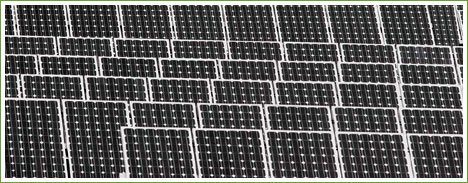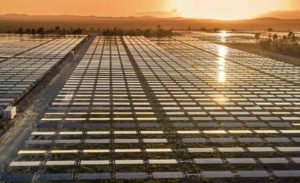It is known as the sunshine state, and boasts what has been regarded as the most sensible and effective solar energy support scheme in the Australia, but a surprising prediction in the latest Queensland Renewable Energy Plan has raised questions about whether the state is about to end its solar feed-in-tariff.
The QREP is a document that is updated every so often to reflect the government’s latest thinking about the deployment of renewable energy. The latest, unveiled to much local fanfare late last week, reveals the dominance of solar in the local market, the lack of developments in any other renewable energy source, and a disturbing lack of ambition.
The most striking aspect, though, relates to solar PV and solar hot water. In 2008, the state had just 6MW of rooftop solar and it predicted then that it would grow to a mere 40MW by 2020. Three years later, it already has 355MW of solar PV installed in the state and 250MW of solar hot water.
This in an excellent achievement, but it seems the state’s ambition stops there. It now predicts that there will be 750MW of solar PV by 2020 – it sounds impressive, but it suggests an average of only 38MW of solar PV will be added in the state each year out to 2020, even though five times that much was installed in 2011 and twice as much in 2010.
This is despite the government’s own observation that solar PV is “an increasingly affordable and popular energy technology option as Queensland households and businesses embrace more sustainable lifestyles and practices” and the fact that it expects solar PV “to become cost competitive with conventional fossil-fuel energy generation within the next decade.”
“They’ve either blundered or there is something going on,” suggests Nigel Morris, the head of Solar Business Services, a consulting firm. That something else could be the end, or a dramatic cut, in the solar feed in tariff, which currently stands at 44c/kWh net – meaning it only applies to excess electricity exported back into the grid. The government last year cut the maximum size of the system to 5kW from 15kW, but the retention of the tariff has so far remained bipartisan policy, at least during the current election program.
Morris notes that there has been a lack of clarity around the costs of the program, even though an Australian Energy Market Commission report last year found it was adding just 0.03c/kWh to consumer costs, based on the deployment estimates at the time. This compared to an extra 3c/kWh for transmission costs. “It’s hard to understand how the government could be factoring in negative growth in the solar industry – either they don’t understand or there is something else going on.”
Another startling aspect of the QREP document was the lack of ambition for other renewables, particularly solar thermal. The document takes great pride in noting that Queensland will play host to the 250MW Solar Dawn solar thermal project in Chinchilla, one of the Solar Flagships projects to which the state government is contributing $70 million, and the 44MW solar boost project at the neighbouring Kogan Creek coal-fired generator.
Its projections for 2020, however, suggest that apart from these two projects only 6MW more solar thermal will be constructed over the next decade. If the only reason to build the two solar thermal projects is as a show piece and a photo opportunity, rather than a key step to develop a new industry, then they would probably be better off not doing at all.
The Queensland state clearly has little hope of geothermal and ocean energy – despite its warm words about those technologies – predicting there will be 5MW of geothermal by 2020, up from 0.8MW now (it hosts the only geothermal energy plant in Australia, the 20-year facility at Birdsville), and zero ocean energy. In 2008, the QREP had predicted 250MW of geothermal by 2020.
It has also downgraded its outlook for wind, from 750MW to 600MW. The irony is that it could have gotten a whole lot more from a single project, the proposed 750MW Kennedy Wind Farm, but after meekly submitting to Xstrata’s decision to opt for a gas-fired gas plant in Mt Isa rather than supporting the $1.5 billion CopperString transmission project, the future of the Kennedy wind farm – which could have been Australia’s largest – is now in doubt.
Embarassingly for the state, the QREP reveals that not a single wind turbine has been added in the last 3 years (it has only 12MW of wind), the amount of biomass has actually reduced slightly (it is forecast to rise to 550MW from 405MW now), and there has been no new hydro, geothermal or any other renewable energy source, apart from solar PV and solar hot water, in the past three years.
Meanwile, down south
In contrast to Queensland’s lack of ambition, the ACT – as mentioned last week – is forging ahead with plans to introduce the nation’s first feed in tariff for large scale solar, with the rate to be set by a reverse auction among rival project developers.
About 150 solar industry types gathered in Canberra on Friday for a briefing on the plans which will see 40MW of large scale solar installed in the first stage.. All developers will first need to meet minimum qualification standards to ensure that the auction is not derailed by low ball bids that have no credibility.
Those that can demonstrate quickly that they have the technical prowess and financial support to deliver a project will be invited into a “fast-track” auction that could offer up to 20MW of installed capacity for auction. This could be decided by mid-year. Any capacity not taken up in this accelerated auction will be retained along with the other 20MW for a further auction.
The ACT hopes ultimately to install 210MW of large scale solar through this method, although later rounds could be opened to other technologies, depending on the territory’s needs at the time.
The government also said it would minimize costs of the project by introducing a “contract for difference”. This means that the ACT government would pay the difference between the prevailing wholesale price and the tariff set by the auction. The project developers would also surrender renewable energy certificates to the government, further reducing its obligation. This differs from rooftop solar tariffs, where the entire cost of the tariff is passed on to consumers, setting in train a huge debate in the industry about the fairness of such tariffs, and which costs should be met by consumers, retailers and distributors.
“I think this is the best way to go for the market,” said Warwick Johnston, an analyst and managing director of Sunwiz Consulting. He said there many challenges to be overcome to ensure it was implemented correctly, but “I think this is the most enlightened thing that any Australian government has done – it has gone a long way to addressing the most significant obstacles in the most cost effective way.”








